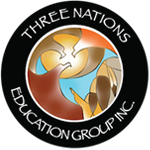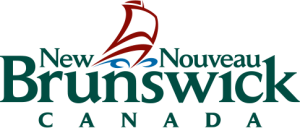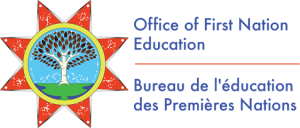Welcome to this curriculum resource on Treaty Education.
This unit is part of a Treaty Education resource for Grades 3 – 6 sponsored by the Three Nations Education Initiative Inc. and the New Brunswick Department of Education and Early Childhood Development. It provides opportunities for students, their teachers and the public to explore the following issues:
- A shared history that includes culture, traditions, and beliefs
- The contributions that Indigenous peoples of New Brunswick have made to contemporary society
- The Peace and Friendship Treaties that serve as the foundation of present-day inter-relationships among Indigenous people, New Brunswick and Canada
- An Educational Response to the Truth and Reconciliation Commission’s Calls to Action
This teaching resource has been created so that young people throughout New Brunswick can better understand the treaties that were agreed to by the Indigenous people of New Brunswick and the British Crown. These treaties are called Peace and Friendship Treaties and were signed in the 18th century. Representatives of the British Crown and the Waponahkiyik (Wabanaki) Nations — the Wolastoqewiyik, Mi’kmaq, Passamaquoddy, Penobscot, and Abenaki — signed the treaties. The intent of the representatives who signed them was to maintain peace and friendship between the English and Indigenous parties and allow both to maintain their ways of life. Unlike in other treaties signed in Canada, there was no mention, much less surrender of land in any of the Peace and Friendship Treaties. They were renewed and ratified during times of British conflict with the French — Indigenous people had supported the French during their wars with the British — to secure Indigenous neutrality. Treaties were also renewed at the end of wars that the Waponahkiyik fought to prevent the theft of their land. The Peace and Friendship Treaties have endured over the centuries and remain relevant today.
Through Elders’ advisement in language and stories, research, and photographs, we will share with you content and teaching strategies under three overarching themes:
- Mi’kmaw, Passamaquoddy and Wolastoqey culture and beliefs called Telqamiksultimk aqq Ketlamsitasik Mi’kmawey – Way of Life – Wetapeksuwakon
- Past history and how it affects the present called Ta’n Teliaqipnek aqq Ta’n Teliaq kiskuk – Economic, Social and Political Life – Wetawsultiyeqpon, Mawehewakon naka Litposuwakon
- Contemporary issues and taking positive action called Kiskuk Ta’n Teliaq – Contemporary Issues – Tokec Weskuwitasikil Eleyik.
In this curriculum resource, we have used Mi’kmaw (Francis-Smith writing system) and Wolastoqey Latuwewakon (Robert M. Leavitt writing system) language wherever possible. We have also used Mi’kmaq and Wolastoqey terms alongside English terms. This is, in part, an effort to encourage all young people to try to learn these languages. In each case, Mi’kmaw is above or before (blue) the English term and Wolastoqey Latuwewakon (red) is below or after it.
The content and strategies are presented in nine lesson plans with each of the themes comprised of approximately three lesson plans, featuring:
- Curriculum outcomes – taken from the Department of Education’s Learning Outcomes for each discipline
- Introduction for the teacher – intended to provide information for the teacher on the topic before activities are selected
- A variety of activities – selected for students. It is the intention of the curriculum design that one activity under each of the lessons be selected based on the class makeup – classes of predominantly Indigenous students in First Nations Schools, classrooms where there are some Indigenous students under the provincial system, or classrooms where there are no Indigenous students within the provincial system
- Supporting materials and resources
- References – these are the sources for the material used in writing the teachers’ notes or in designing the activities
We have designed the material to look like Mi’kmawe’l Ta’n Tel-kina’muemkl, the curriculum material designed by the Confederacy of Mainland Mi’kmaq in Nova Scotia. We are indebted to them for sharing their material with us. We have drawn from this work when creating this curriculum resource. A copy of this curriculum is available at: www.mikmaweydebert.ca/home/sharing-our-stories-/education-and-outreach/school-curriculum. This sharing of material also demonstrates that indigenous relations extend beyond federal and provincial borders as do the Peace and Friendship Treaties. These treaties serve as the initial relationship between First Nations and the Federal Government and are discussed throughout the units of study grades 3-6.
All nine lessons at each grade level represent about four weeks of work if a teacher were to teach the lessons in a Social Studies setting at two periods per cycle. Where possible we have also related them to outcomes in other subject areas so that the time for this unit in the classroom could be expedited. The lesson plans and kits of books containing First Nations Lesson Plans K-5, which were introduced by the New Brunswick Department of Education and Early Childhood Development in 2015, at the Grade 3 level, have many books and lesson plans addressing the Social Studies and Language Arts outcomes. We have incorporated some of these in our lesson plans.
The features of the curriculum include the following:
- Learning outcomes at each grade level derived from the province’s program of studies
- Learning outcomes cross-referenced across a range of subjects and subject manner
- Complementary material to the assigned text book
- Teacher’s background information for the topic
- A list of expectations for the student
- Sequential material from grade to grade
- An interdisciplinary approach which features activities from the Multiple Intelligences spectrum
- Where possible, taught from an Indigenous perspective
- Activities intended for Indigenous schools, schools where there exists an Indigenous component and schools with no Indigenous students
- Vocabulary in Mi’kmaw and Wolastoqey Latuwewakon
- Evaluation strategies
Summary and Themes of Lessons
Mawi-amskwesewey Ankukumkewey na ujit Kkijinu Maqamikew (Mi’kmaq)
The First Treaty is with Our Earth Mother
Amsqahsewey Lakutuwakon Wiciw Kci Kikuwosson (Wolastoqey)
| Telqamiksultimk aqq Ketlamsitasik Mi’kmawey Culture and Belief Skicinuwi Eleyultimok naka Wolamsotomuwakon | Ta’n Teli-Wlo’ltimk aqq Kipnno’l teleyuksi’kw Economic Social and Political Life Wetawsultiyeqpon, Mawehewakon naka Litposuwakon | Kiskuk Ta’n Teliaq Contemporary Issues Tokec Weskuwitasikil Eleyik |
|---|---|---|
|
|
|
|
|
|
|
|
|



